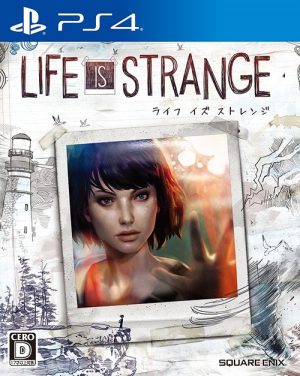
Anime has blown up into an incredible creative medium both in Japan as well as worldwide. The vast majority of us are anime fans, or at the very least, know some of the characters. However, as otaku, the question soon arises, from the vast numbers of fandom debates about who is best girl in a series, to who can take a certain monkey-tailed protagonist in a fight, we enjoy talking about the medium we love. We then also learn more about anime as an industry, as well as an artistic medium. These debates do have an element of fact and concrete evidence to them; however, things always blur into highly subjective chats. Nonetheless, it is important we do this as fans, so let’s get to it, the 10 most influential characters!
10. Edward Elric – Fullmetal Alchemist: Brotherhood
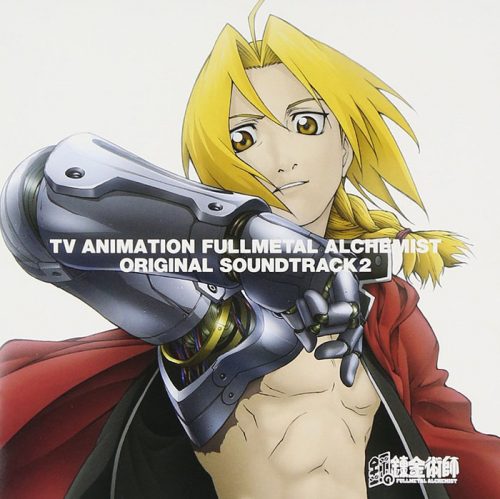
- Episodes: 64
- Aired: April 2009 – July 2010
Alchemy is governed by the Law of Equivalent Exchange, for something to be obtained, something of equal value must be lost. The Elric Brothers, Edward and Alphonse, unfortunately learn this too late and they end up suffering terribly. Edward loses his left leg, while Alphonse is stripped of his entire physical body. Unwilling to lose his brother, Edward gives up his right arm in order to affix Alphonse’s soul to a suit of armour. Spurred on by the hope of one day returning their bodies to normal, Edward receives a set of metal limbs known as automail and becomes a State Alchemist, dubbed the Fullmetal Alchemist. Three years after the incident, the two of them seek the Philosopher’s Stone, a relic which allows an alchemist to disregard the law of Equivalent Exchange. With several colleagues in the military at their side, the Elric brothers find themselves embroiled in a dark nationwide conspiracy which unravels uncomfortable truths about their country as well as the Philosopher’s Stone itself.
Rife with imagery, Fullmetal Alchemist tells a compelling story of two brothers who lose everything in a single night, the older of whom, Edward, is a hot-headed, ambitious and intelligent protagonist with a strong sense of justice. With a character who sports a red coat featuring a clear “Serpent’s Cross”, an alchemical concept concerning the removal of toxins, the show itself gives viewers much to consider whenever discussing its themes and concepts. Edward is a multi-layered character who shows his various layers intermittently throughout the duration of the series. His love for his brother Alphonse is a major character point as it is evident in extreme moments of self-sacrifice. However, this was only possible because he and Alphonse are prodigies who studied alchemy as children. Edward is a serious and hot-headed character and an adept alchemist, becoming the youngest at age 12.
9. Lelouch Lamperouge (vi Britannia) – Code Geass: Hangyaku no Lelouch
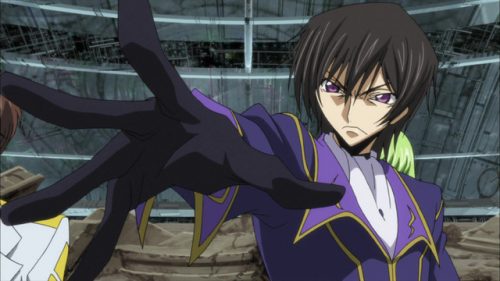
- Episodes: 25
- Aired: October 2006 – July 2007
In 2010, the Holy Empire of Britannia begins to explore its military might, starting off with the conquest of Japan. Renaming the country “Area 11” after its defeat, Japanese citizens become rebels in an attempt to regain their independence. Exiled prince of Britannia, Lelouch Lamperouge, finds himself in the middle of a conflict between Japanese rebels and Britannia’s forces. He escapes only due to the appearance of C.C., a mysterious girl who gives Lelouch the “Geass”, an incredible power which manifests in him as the power of absolute obedience. Lelouch then dons a mask and becomes “Zero”, an enigmatic figure leading the Japanese rebels against Britannia, for whom Lelouch bears much resentment.
Lelouch is a character who comes up in many discussions about Death Note due to Code Geass engaging with similar themes, as well as the protagonists of both shows being markedly similar in their ambition for domination. However, Lelouch’s appeal lies in his total focus on the task he had laid out for himself. He lost his cool on several occasions as the reality of his actions begins to set in, but eventually gains the control he desired – only to orchestrate his own public assassination on the day of his ascension to the throne in a scene which proves Lelouch’s understanding of the true extent of his role within the confines of the show.
8. Uzumaki Naruto – Naruto

- Episodes: 220
- Aired: October 2002 – February 2007
Moments before Uzumaki Naruto was born, a giant demon known as the Nine-Tailed-Fox attacked his village of Konohagakure, the Hidden Leaf Village, causing utmost destruction. In order to seal away the demon, the village leader, the Fourth Hokage, sacrifices his life and seals the Nine-Tailed Fox in newborn Naruto. Fast-forward to his childhood and pubescence, Naruto is a hot-headed ninja who is shunned by his fellow villagers because of the demon trapped inside him. However, despite the difficulty he is faced with, Naruto wishes to one day become the Hokage himself and through this path he eventually grows, meeting great friends and powerful enemies along the way.
Inspired by Son Goku’s exploits, Naruto’s standing as a Shounen protagonist is indisputable as the main character of one of Shounen Jump’s Big Three. Naruto is a quintessential shounen protagonist, a character with a troubled past and lofty ambitions, he is also straightforward and honest, as well as determined to protect his friends from harm. Much like the iconic Son Goku, Naruto is a character fans have watched grow over the years and eventually achieve his goals, even becoming a father in the process. His orange ninja suit, cat whiskers and mischievous smile are a sight recognised by millions of people around the world, an anime icon unto himself.
7. Yagami Light – Death Note

- Episodes: 37
- Aired: October 2006 – June 2007
Shinigami are gods of death and as such, they are capable of killing any person, as long as they can see their victim’s face and write the victim’s name in a notebook known to them as a Death Note. A bored Shinigami named Ryuk one day decides to mess with the matrix and drops his Death Note into the human realm. High school prodigy Yagami Light finds the Death Note and begins to use it as he detests the way the world is. Realising the extent of the power he has stumbled upon, Light steels his resolve and decides to rid the world of all criminals and create the type of society where he will be feared as a god. However, the string of strange criminal deaths catches the attention of the authorities and they hire the world’s best detective in order to solve the case.
For many anime fans around the world, Light needs no introduction. His exploits with Ryuk’s Death Note, as well as his incredible level of wit and cunning to be able to go to toe-to-toe against the world’s greatest detective in several strategic bouts and win. L’s death in the series is a major checkpoint as it is after his death that the complexion of the series began to change and Light’s grip on the world as Kira begins to tighten. The dissonance between Light’s initial impression and his eventual cold, manipulative and calculating demeanour in most of the series creates the perfect mask.
6. Kaneda Shotaro – Akira
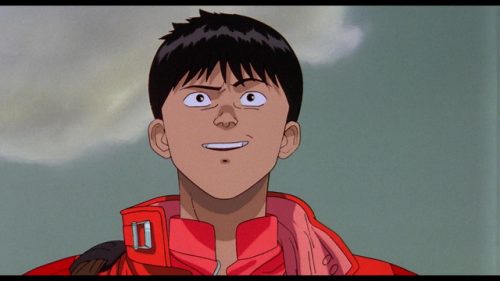
- Episodes: 1 (movie)
- Aired: July 1988
An explosion thoroughly decimates the city of Tokyo in 1988, a disaster which leads to the eruption of World War III. A boy with psychic powers is responsible and taken away into custody. Now in 2019, the newly-restored city of Tokyo, Neo-Tokyo, is a city plagued by gang violence and terrorism as a result of discontentment with the current government. The Capsules are a group of bikers who ride around in custom motorcycles, led by Kaneda Shotaro. His gang find themselves constantly at ends with the group known as The Clowns and in one of their battles, Kaneda’s friend Tetsuo is caught up in an accident involving an esper who somehow escaped a government institution. Tetsuo’s exposure to the esper in turn causes him to develop strange powers and abilities of his own and it is this awakening which forces the government to mobilise in an attempt to lock Tetsuo away before he unleashes the same destructive power which tore through the city more than three decades prior.
Donning his famous jacket which reads “Good for health, bad for education”, Kaneda Shotaro’s iconic appearance makes for much memorability; however, Akira’s overall influence on anime consumption outside of Japan is legendary, being one of the first few major titles to have a Western release. Be that as it may, the charismatic leader of the Capsules has become an icon many people recognise, in fact, the red prevalent on Kaneda’s jacket, as well as the rest of the film has been dubbed “Akirared”. What’s more influential than renaming colours?
5. Kusanagi Motoko – Ghost in the Shell

- Episodes: 1 (Movies)
- Aired: November 1995
Niihama City, 2029. Cybernetics has advanced to the point where people can replace almost all their body parts and organs with robotic prosthetics and Public Security Section 9 is a team made up of AI as well as modified and unmodified humans. Major Kusanagi Motoko is a woman with full-body prosthetics as a result of an accident she experienced in her childhood. Together with Batou, her right-hand man and her information broker, Ishikawa, Major Kusanagi must track down the notorious hacker known as “The Puppetmaster”.
The legendary Ghost in the Shell franchise which has been imagined and reimagined several times, a recent rendition being the live-action film starring Scarlett Johansson. The series made waves for its dark, gripping cyberpunk feel and philosophical questions and its protagonist, Kusanagi Motoko, is a character well-crafted character who very much embodies the hard-hitting philosophical questions presented in the film and her strong personality saw her ranked at 11th on IGN’s 2014 iteration of “The Greatest Anime Characters of All Time”.
4. Midoriya Izuku – Boku no Hero Academia (My Hero Academia)
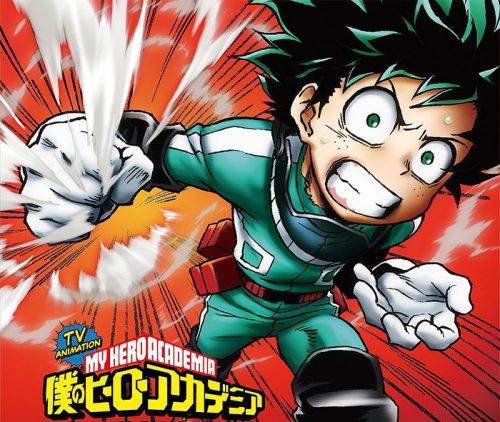
- Episodes: 13
- Aired: April 2016 – July 2016
In this world, people have developed “Quirks”, unique superpowers which are common to well over 80% of humanity. The rest, like individuals such as Midoriya Izuku, have to be content with being powerless. Unfortunately, Izuku has always dreamed of being a hero and due to his lack of a Quirk, he admires heroes, taking notes of their abilities, tactics and even personalities. It is this unwavering passion for heroes that catches the eye of the greatest hero, Izuku’s idol, All Might. All Might chooses Izuku to be his successor, putting him through a rough training regimen for several months before Izuku enrols at U.A. High, a high school famous for its hero training program. Alongside a crop of talented classmates, Izuku will be put to the test throughout this story; the story of how he became the greatest hero.
Pressing on in a strange time after the end of 2/3 of Shounen Jump’s Big Three, Boku no Hero Academia has big shoes to fill in the Shounen universe, heralding a third wave of Shounen titles which draw upon themes expressed in shows as old as the Dragon Ball franchise. Midoriya Izuku’s journey in Boku no Hero Academia has many of the traits of the classic Shounen protagonist: a lofty ambition, seemingly impossible odds, a rival as well as a never-say-die attitude which for Izuku, presents itself in moments where another person’s life is in danger. In some way, Izuku ironically embodies the ideal type of hero, despite being this very embodiment long before he had the power to back it up.
3. Tsukino Usagi – Bishoujo Senshi Sailor Moon
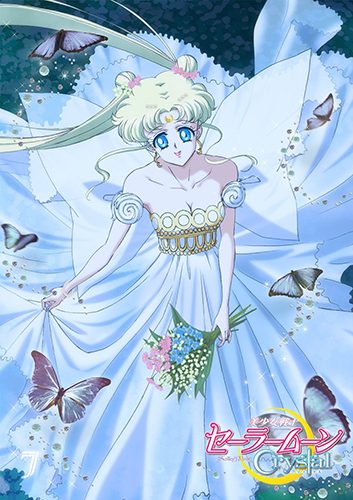
- Episodes: 46
- Aired: March 1992 - February 1993
14-year-old Tsukino Usagi is a crybaby who doesn’t do too well at school and lives a pretty average life. At least until she saves a cat with a crescent moon-shaped mark on its forehead. The cat, Luna, reveals the fact that they did not meet by accident and tells Usagi that she is destined to become Sailor Moon, guardian of the Earth. With her special brooch allowing her to transform, Usagi must now use her powers to save her city from the evil Queen Beryl and her lackeys from the Dark Kingdom. Now Usagi must juggle her day-to-day life in addition to getting used to her role as Sailor Moon, a role which places the very fate of the world on her shoulders.
Sailor Moon’s influence is clear in the state of the Mahou Shoujo genre after the show’s release. The iconic Sailor Moon transformation sequence has found its way into Western cartoons, with shows like Winx Club borrowing from Sailor Moon. The series is for many people the gateway which brought them to anime and garners much respect and attention for those feeling nostalgic. The use of Usagi as the series protagonist is different to the type of protagonist we’d been subject to through Shounen titles which were extremely popular at the time. Usagi represents the frail being able to become heroes unto themselves and others with the right kind of inspiration and support, a concept entrenched in Shounen anime but presented to a different intended demographic. The result? More anime fans.
2. Ayanami Rei – Neon Genesis Evangelion
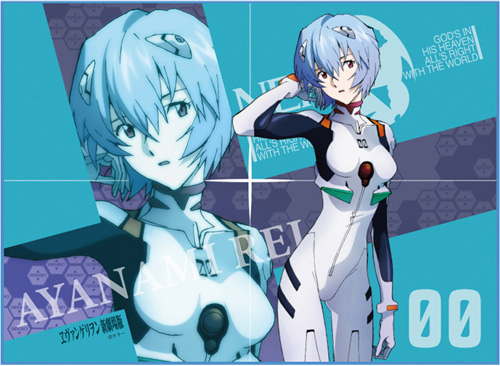
- Episodes: 26
- Aired: October 1995 – March 1996
The year is 2015. The world is on the brink of destruction and humanity’s only hope lies with NERV, an agency under the United Nations which possesses giant robots known as the Evangelion. The Evangelion are to be piloted by compatible pilots who will then engage in combat against the Angels, alien creatures which are the harbingers of humanity’s doom. Ikari Gendou is the head of NERV and calls upon his 14-year-old son, Shinji, to pilot the Evangelion Unit-01 and carry the weight of humanity’s survival alongside other youngsters like himself. Seeing his father for the first time in years, Shinji must adjust to a life shaken up by cataclysmic events and fate in order to become a legend.
Ayanami Rei is a character of immense influence within the anime medium due to her being the progenitor of an archetype known as the Ayanami Rei Expy, which obviously took her name. The archetype is now found throughout Japanese media, which is unsurprising given the vast influence Neon Genesis Evangelion had on the mecha genre. The influence is seen heavily pronounced in series like Eureka Seven, which shares similar story elements and themes, as well of course, a character of the Ayanami Rei archetype – titular character Eureka. Common Ayanami Rei Expy traits include a troubled past, mysterious origins, pale skin and a stoic personality, as well as unnatural cold colours used for their hair and eyes. The archetype has spawned a plethora of variations and said variations have produced their own permutations, further entrenching Ayanami Rei into the fabric of not only anime, but other forms of Japanese media.
1. Son Goku – Dragon Ball
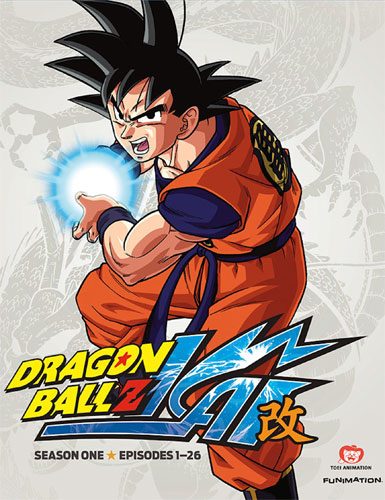
- Episodes: 153
- Aired: February 1986 – April 1989
Son Goku is a 12-year-old boy who lives alone in the mountains far away from human contact, other than his now-deceased grandfather. His solitary life persists until a girl named Bulma runs into him while on her search for the Dragon Balls, a set of seven magical orbs which can grant those who collect all seven any wish. Bulma hopes to use them to wish for the perfect boyfriend and lucky for Bulma, Goku is in possession of one of the Dragon Balls. However, he refuses to part with the ball for sentimental reasons, which inspires Bulma to cut him a deal: in exchange for the Dragon Ball, Goku can tag along with Bulma on her quest. While on their journey, the two meet several interesting characters, including the Turtle Hermit master, Roshi and Krillin, a former monk turned disciple, as well as a host of dangerous villains who wish to use the Dragon Balls for evil.
Goku’s influence on the Shounen genre is widespread. The concept of having a character grow up in front of his loyal audience at the time of the height of Dragon Ball in the world was unprecedented and continues to reverberate throughout the anime medium to this very day, with Naruto closely following the Dragon Ball formula in that regard. Son Goku represents the true archetypical Shounen protagonist; an individual with an unshakeable sense of justice in addition to a kind of frank honesty and sincerity which sometimes even gets them into unbelievable amounts of danger and peril. All this before even mentioning the shock created by the first Super Saiyan transformation, we think you get the point – he is an anime icon who extends beyond the bounds of the medium.
Final Thoughts
Anime influences other modes of culture in several ways and this is expressed in the media which we are exposed to. From anime-inspired video games to anime themes and styles as well as characters explored in film and entertainment, anime is a medium with a large following. Anime characters have been used to promote many of Japan’s international sporting exploits, particularly the upcoming Olympics and it is beautiful as an anime fan to see the extent of the reach anime characters can have, beyond the medium itself as well as within. Are there other influential anime characters you’d like to mention? Drop a comment below and let’s talk!
Recommended Post



